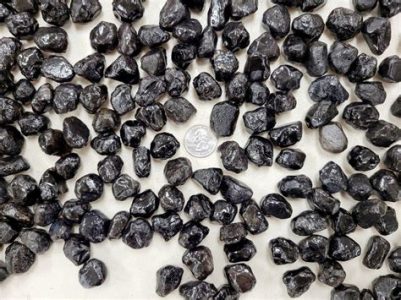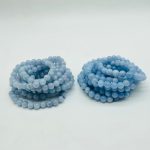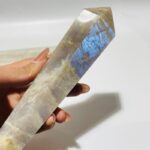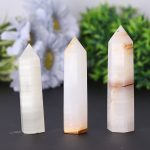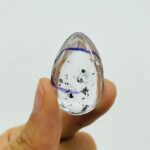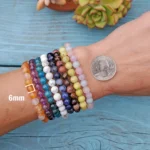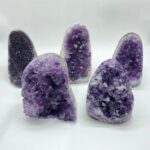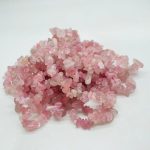Introduction

Black rutile, a rare and enigmatic mineral, has captured the attention of mineralogists and collectors alike. Its striking black color and unique properties set it apart from other rutile varieties. This article delves into the fascinating world of black rutile, exploring its geological origins, remarkable characteristics, and potential applications.
Mineralogical Origins
Black rutile is a naturally occurring form of titanium dioxide (TiO2) that crystallizes in the tetragonal system. However, its distinctive black coloration is not due to intrinsic impurities within its crystal lattice. Rather, it arises from a unique combination of factors involving iron mineralization and high-pressure metamorphism.
Comparative Characteristics
Black rutile shares some similarities with the more common brown rutile. Both are composed of TiO2 and exhibit a tetragonal crystal structure. However, black rutile stands out with its following attributes:
- Color: Intense black, unlike brown rutile’s reddish-brown hue
- Opacity: Opaque, lacking the translucency of brown rutile
- Magnetic Susceptibility: Weakly magnetic, while brown rutile is non-magnetic
- Density: Slightly higher density (4.26 g/cm3) compared to brown rutile (4.23 g/cm3)
Geological Occurrences
Black rutile is primarily found in metamorphic terrains where high temperatures and pressures have transformed pre-existing titanium-bearing minerals. These terrains often contain mafic or ultramafic rocks, which provide the iron necessary for its black coloration.
Applications and Potential
Despite its rarity, black rutile has drawn interest for potential applications in various industries:
- Jewelry: Its unique black color and high refractive index make it a promising gemstone for jewelry and decorative purposes.
- Electronics: Black rutile exhibits semiconductor properties, making it potentially useful in electronic devices.
- Functional Coatings: Its high electrical conductivity and corrosion resistance suggest its use in functional coatings for various substrates.
- Paint and Pigment: Black rutile’s intense black coloration could find use in paints and pigments for industrial or artistic applications.
Strategies for Acquiring Black Rutile
Acquiring black rutile specimens can be challenging due to its scarcity. Collectors and researchers can employ the following strategies:
- Mineral Shows and Auctions: Attend geological events where black rutile may be available.
- Online Marketplaces: Explore online platforms specializing in mineral sales to find potential sellers.
- Geological Fieldwork: Engage in research expeditions to areas known to host black rutile deposits.
Tips and Tricks for Handling Black Rutile
Handle black rutile specimens with care to preserve their integrity:
- Store Properly: Store specimens in a dry, protected environment away from moisture and sunlight.
- Avoid Excessive Heat: High temperatures can damage the crystal structure of black rutile.
- Handle Gently: Black rutile can be brittle. Handle specimens with minimal force to prevent chipping or fracturing.
Common Mistakes to Avoid
Avoid these common mistakes to ensure proper handling of black rutile:
- Improper Storage: Exposing black rutile to extreme temperatures or moisture can deteriorate its physical and chemical properties.
- Rough Handling: Mishandling can lead to damage, scratches, or breakage of the specimen.
- Confusion with Other Minerals: Black rutile can be mistaken for other black minerals, such as ilmenite or magnetite. Verify identification through careful examination or professional analysis.
FAQs
-
What causes the black coloration of black rutile?
– Iron mineralization and high-pressure metamorphism contribute to its unique black coloration. -
Is black rutile magnetic?
– Yes, black rutile exhibits weak magnetic susceptibility due to its iron content. -
Where is black rutile commonly found?
– It occurs in metamorphic terrains, particularly those containing mafic or ultramafic rocks. -
What is the density of black rutile?
– Black rutile has a density of approximately 4.26 g/cm3. -
Can black rutile be used in jewelry?
– Yes, its intense black color and high refractive index make it suitable for jewelry and decorative applications. -
How should black rutile be stored?
– Store specimens in a dry, protected environment away from moisture and sunlight.
Comparisons
| Feature | Black Rutile | Brown Rutile |
|---|---|---|
| Color | Black | Reddish-brown |
| Transparency | Opaque | Translucent |
| Magnetic Susceptibility | Weakly magnetic | Non-magnetic |
| Density | 4.26 g/cm3 | 4.23 g/cm3 |
Pros and Cons
Pros:
- Unique black coloration
- High refractive index
- Weakly magnetic
- Potential applications in jewelry, electronics, and coatings
Cons:
- Scarcity
- Brittleness
- Can be mistaken for other black minerals
- Requires careful handling
Conclusion
Black rutile is a mesmerizing mineral that embodies the intrigue of geological processes. Its enigmatic origins and distinctive characteristics have captivated mineralogists, collectors, and researchers alike. As technology advances, the potential applications of black rutile continue to be explored, promising new innovations in various fields. By understanding its properties, occurrence, and handling requirements, individuals can appreciate and harness the beauty and potential of this remarkable mineral.









